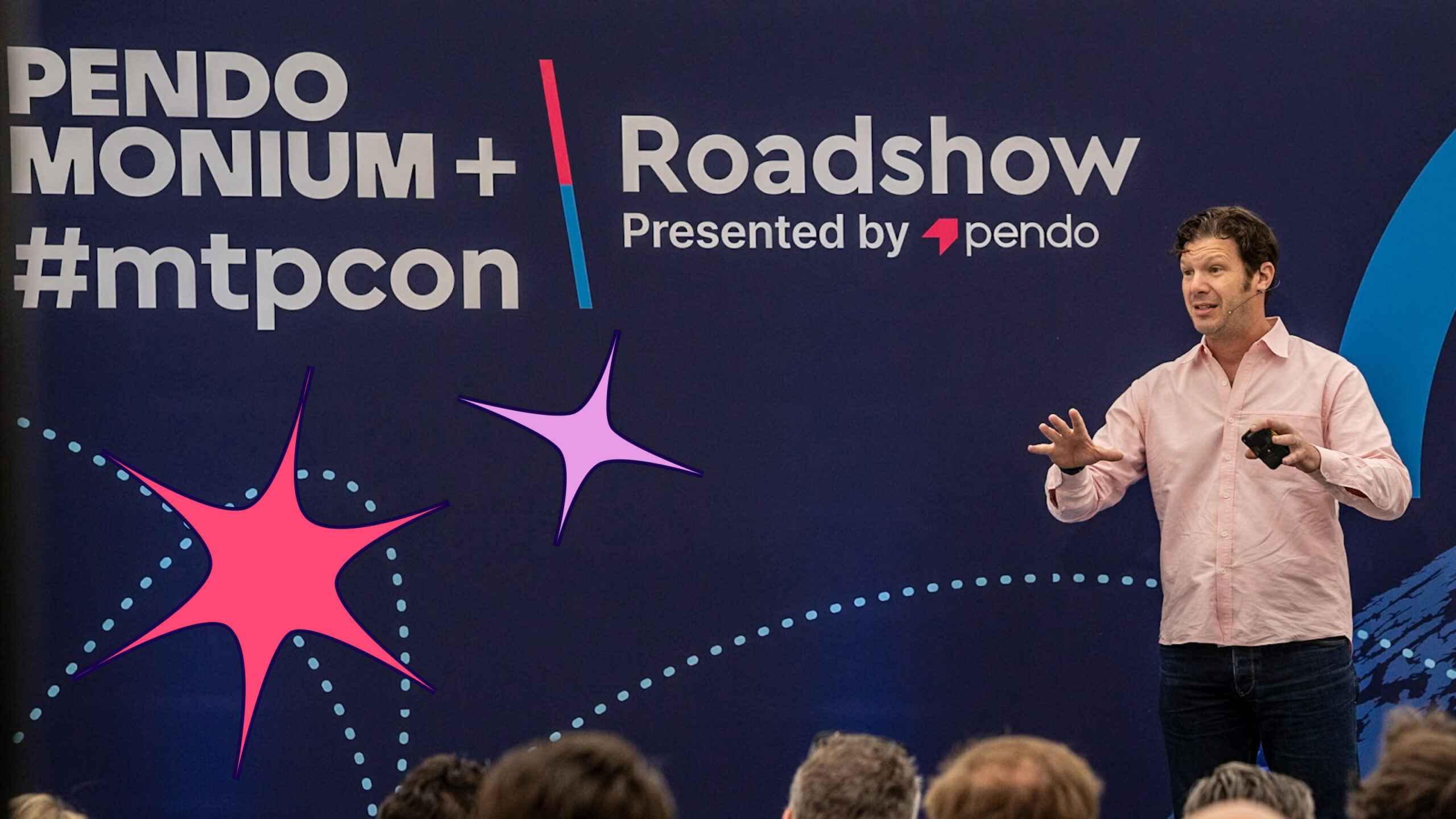By now, most people are familiar with product-led growth (PLG), which is a business strategy that puts the product at the center of the buying journey. While PLG has helped budding startups achieve hypergrowth, we at Pendo believe companies—of all sizes, in every industry—should actually be putting their products at the center of their entire business strategy.
A product-led organization is one that rallies the whole company around the product, enabling each team to leverage it to better support and retain customers, control costs, and achieve their most important outcomes. A recent research study found that, compared to their non-product-led peers, companies that embrace product-led practices see a 28% increase in total active users, 30% more qualified leads, and a 15% increase in net revenue retention, among other benefits.
As you can imagine, becoming product led doesn’t happen overnight. It takes practice, experimentation, and iteration—and buy-in from every corner of the organization. Getting started on this journey might feel daunting, but here’s some good news: You’re likely already in a great position to put your product at the center of your business. Here are three signs that you’re ready to take on a product-led approach:
1. Your customers are more likely to engage with you via digital channels than physical
At product-led companies, teams across the organization—from sales and marketing to customer success and support—utilize the product to streamline processes, eliminate friction in the user experience, and drive business results. Here are some examples of what that could look like:
-
- Customer success: A customer success manager (CSM) looks at their account’s product usage and identifies a key workflow that a significant number of users are not completing. Instead of waiting for the next live sync, the CSM creates an in-app walkthrough to target and guide relevant users through the workflow steps.
- Sales: A sales rep leverages usage data from the company’s free trial to identify highly engaged users who are most likely to be interested in the paid platform. They then create in-app guides that speak to the value of paid features and include a direct link to where users can go to upgrade.
- Product design: A UX designer needs to recruit customers to participate in a beta for a new feature and utilizes in-app guides to ask users to participate while they’re already engaged with the product. With this strategy, they can also target those users who will find the new functionality most relevant and useful.
The above strategies (and many more) first require customers to be leveraging the digital experiences you’ve created. If you offer ways for customers to engage with your business and accomplish tasks digitally, you’re already a step ahead.
2. You measure product usage
One of the core foundations of being product led is leveraging data.
Product usage data helps companies to understand things like where users are struggling, which features they’re using the most, or which functionality they’re ignoring completely. They also pair this quantitative data with qualitative customer feedback, using this holistic view of the customer experience to inform their decisions. Most important, though, is the fact that teams across the organization lean on data in this way—not just product managers and engineers.
Wondering where to start? Here are five KPIs that a product-led organization should be tracking:
-
- Adoption: This helps teams determine if the product is delivering on its intended value, measured by how many users interact with the product (product adoption) or specific features within it (feature adoption).
- Stickiness: This metric measures how many users return to the product on a regular basis, indicating that they’re finding value in it.
- Growth: The net effect of your user acquisition and retention efforts, whether achieved by adding new customers or increasing usage within existing customer accounts.
- Time to value: The amount of time from when a customer starts using a product to when they start deriving value from it.
- Net Promoter Score (NPS): A way to gauge customer loyalty, delivered through a one-question survey that asks, “How likely is it that you’d recommend this brand to a friend or colleague?”
In the end, knowing both what users do within and say about your product is essential to understanding what they need from your product. Any company that’s measuring product usage and collecting feedback is prepared to become product led.
3. You’re focused on the long term
A product-led approach is not just concerned with delivering value to customers now, but continuously. Companies must maintain an ongoing dialogue with their customers so they can learn, experiment, and iterate to make constant improvements to the product—especially as users’ needs evolve over time. You must be comfortable focusing on the long-term needs of your users, even if it sometimes means ignoring short-term concerns.
If your company is already operating in this manner, the ability to adopt a product-led strategy is closer than you think.
Ready to get started on your product-led journey? Sign up for the Product-led Certification Course to deepen your understanding of product-led strategies and how to apply them at your organization.


